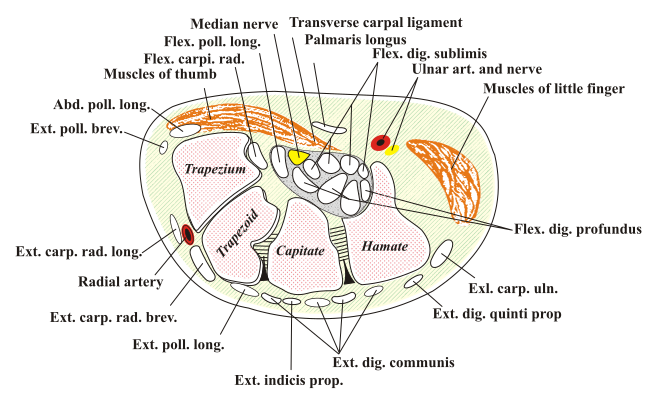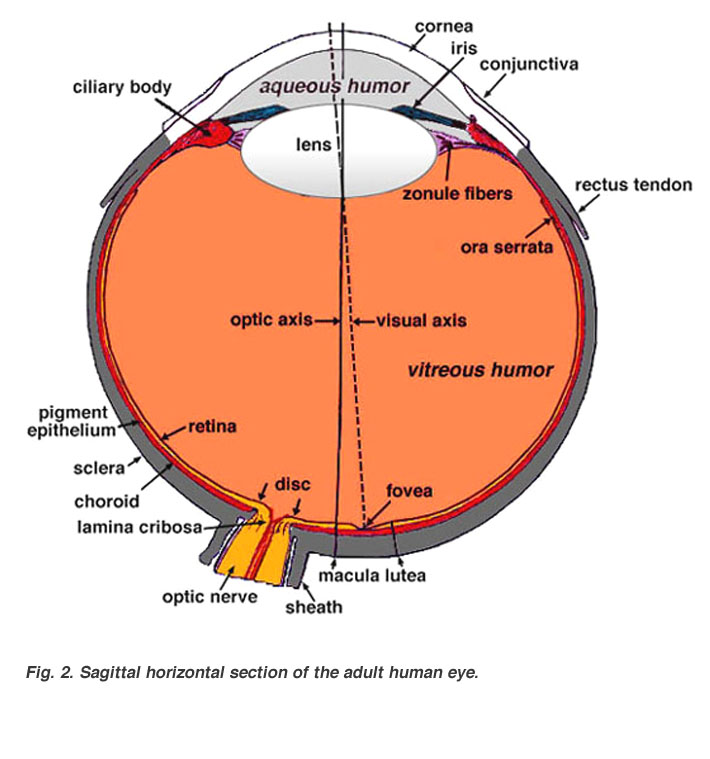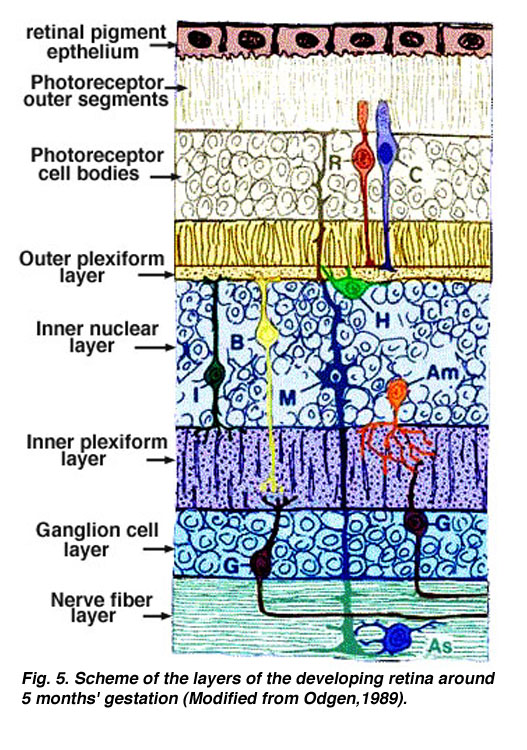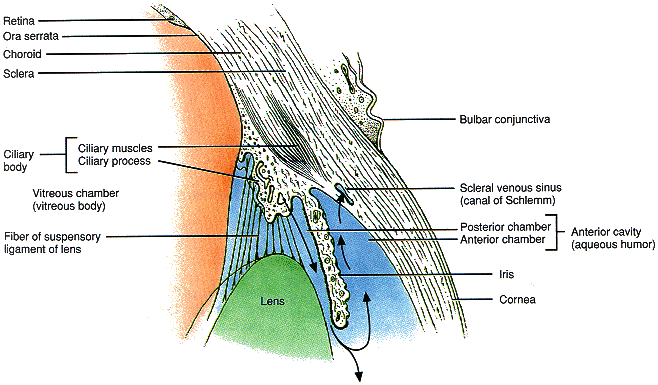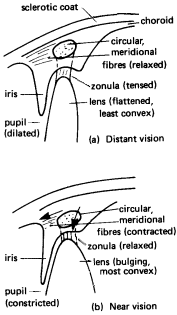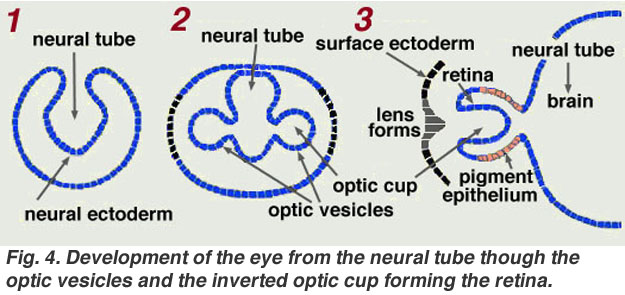Physiology of Hearing
@ 20 degree C, sound travels@ 344 m/s in airsound signal collected by pinna-passes through external auditory canal-strikes TM-transmitted through chain of ossicles- pressure changes in labyrinthine fluids-movement of basilar membrane-stimulation of hair cells in organ of corti-conversion of electrical energy into electrical impulses-travels along auditory nerve
1.conductive apparatus-mechanical conduction of sound
2.sensory system of cochlea- transduction of mechanical energy to electrical impulses
3.neural pathways-conduction of electrical impulses to brain
Conduction of Sound:
Impedence matching/Transformer action- middle ear converts sound of greater amplitude & lesser force to that of lesser amplitude & greater force-
a-lever action of ossicles-handle of malleus is 1.3 tmes longer then long process of incus-providing a mechanical advantage of 1.3
b-hydraulic action of TM-the area of TM(67.5 square mm):area of stapes footplate(3.2 square mm)=21:1
effective vibratory area is 2/3rd(45 square mm), hence the ratio reduces to 14:1(areal ratio), the product of this ratio & liver action of ossicles = 18:1
c-curved membrane effect-movements of TM are more @ periphery than @ centre where malleus handle is attached
Phase differential between oval & round window:
-sound waves striking the TM don't reach the oval & round window simultaneously. There is a preferential pathway to the oval window because of the ossicular chain. Thus, when oval window is receiving wave of compression, the round window is at phase of rarefaction. If the sound waves were to strike both the windows simultaneously, they would cancel each other's effect with no movement of perilymph & no hearing. The acoustic separation of windows is achieved by the presence of intact TM & cushion of air in the middle ear around the round window.
Natural resonance of external(3000Hz) & middle ear(800Hz):
-inherent anatomic & physiologic properties of the external & middle ear allow certain frequencies of sound of sound to pass more easily to the inner ear due to their natural resonances-frequencies most efficiently transmitted by ear ossicles are between 500-2000 Hz while that by TM is 800-1600Hz.Thus, greatest sensitivity of sound transmission is between 500-3000 Hz & these are the most important frequencies in day to day conversation
Transduction of Mechanical Energy to Electrical Impulses:
-movements of stapes footplate-transmits to cochlear fluid-moves basilar membrane-setting up of shearing force between tectorial membrane & hair cells. The distortion of hair cells gives rise to cochlear microphonics to which triggers the nerve impulse.
-sound wave, depending upon its frequency,reaches maximum amplitude on a particular place on the basilar membrane & stimulates that segment-travelling wave theory of Bekesy-higher frequencies are represented in the basal turn of cochlea & the progressively lower ones towards apex.
Neural Pathways:
-hair cells get innervation from the bipolar cells of spiral ganglion
-central axons of these cells collect to form cochlear nerve-goes to ventral & dorsal nuclei
-from there, both crossed & uncrossed fibres travel to the superior olivary nucleus-lateral leminiscus-inferior colliculus-medial geniculate body-auditory cortex of temporal lobe
Physiology of Vestibular System
Vestibular system divided as:
-Peripheral-membranous labyrinth(semicircular ducts, utricles & saccules) and vestibular nerve
-Central-made up of nuclei & fibre tracts in the central nervous system to integrate vestibular impulses with other systems to maintain body balance
Semicircular Canals:
-respond to angular acceleration & deceleration-3 canals lie @ right angles to each other, but one which lies@ right angles to the axis of rotation is stimulated the most.
-horizontal canal responds maximum to rotation on the vertical axis & so on. Due to this arrangement of the 3 canals in 3 different planes, any change in position of head can be detected
-stimulation of semicircular canals produces nystagmus & the direction of nystagmus can be determined by the plane of canal being stimulated
-horizontal nystagmus- horizontal canal
-rotatory-superior canal
-vertical -posterior canal
The stimulus to semicircular canal is flow of endolymph which displaces the cupula. The flow may be towards the cupula-ampullopetal(utriculopetal), or away from it-ampullofugal(utriculofugal). Ampullopetal flow is more effective than ampullofugal for the horizontal canal-The quick component of nystagmus is always opposite to the direction of flow of endolymph.
Thus, if a person is rotated to the right for sometime & then abruptly stopped, the endolymph continues to move to the right due to the inertia- ampullopetal for the left canal- nystagmus horizontal-directed to left
Utricle & Saccule:
-utricle stimulated by linear acceleration & deceleration or gravitational pull during the head tilts-the sensory hair cells in the macula lie in the different planes & stimulated by displacement of otolith membrane during head tilts
-the function of the saccule is similar to that of the utricle as the structure of maculae in the two organs is similar but experimentally, the saccule is also seen to respond sound vibrations
-vestibular system registers changes in head position, linear or angular acceleration & deceleration & gravitational effects-information sent to CNS where information from other systems- visual,auditory,somatosensory (muscles, joints, tendons,skin)-also received.All this information is integrated & used in the regulation of equilibrium & body posture. Cerebellum, which is also connected to vestibular end organs, further co-ordinates muscular movements in their rate, range, force & duration- maintenance of equilibrium
Maintenance of body equilibrium:
-the balance system-vestibular,visual,somatosensory- a two sided push-pull system
-in static neural position, each side contributes equal sensory information
-during movements- like turning,tilt etc, ther's temporary change in push & pull system which is corrected by appropriate reflexes & motor outputs to the eyes(vestibulo-ocular reflex), neck(vestibulocervical reflex), trunks&limbs(vestibulospinal reflex) to maintain new position of head & body, but if any component of push & pull system of one side is disturbed for a longer period due to disease- vertigo & ataxia develop.
Vertigo & Dizziness:
-Disorientation in space causes vertigo or dizziness & can arise from disorders of any of the 3 systems- notably vestibular, somatosensory or visual
-Normally, the impulses reaching the brain from the 3 systems are equal & opposite.
-if any component on one side inhibited/stimulated, the information reaching the cortex is mismatched, resulting in disorientation & vertigo. The vestibular inhibition on one side (like acute vestibular failure, labyrinthectomy, Meniere's disease, CN VIII section) causes vertigo. Dizziness can similarly results from ocular causes,(e.g. high errors of refraction/acute extraocular muscle paralysis with diplopia)
Motion Sickness:
-characterised by nausea, vomiting, pallor, sweating during sea,air,bus/car travel-in certain susceptible individuals
-can be induced by both by real & apparent motion & is thought to arise from mismatch of information reaching the the vestibular nuclei & cerebellum from visual, labyrinthine & somatosensory systems- can be controlled by labyrinthine sedatives

